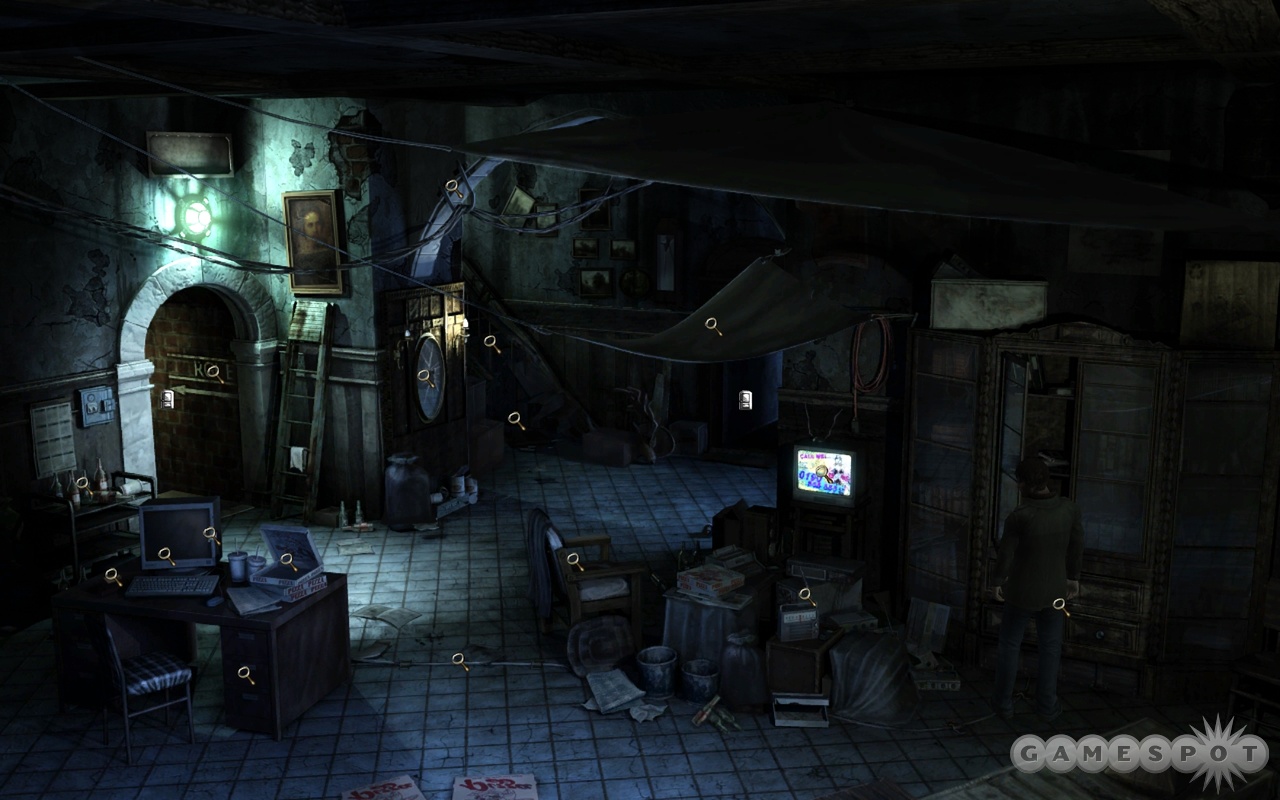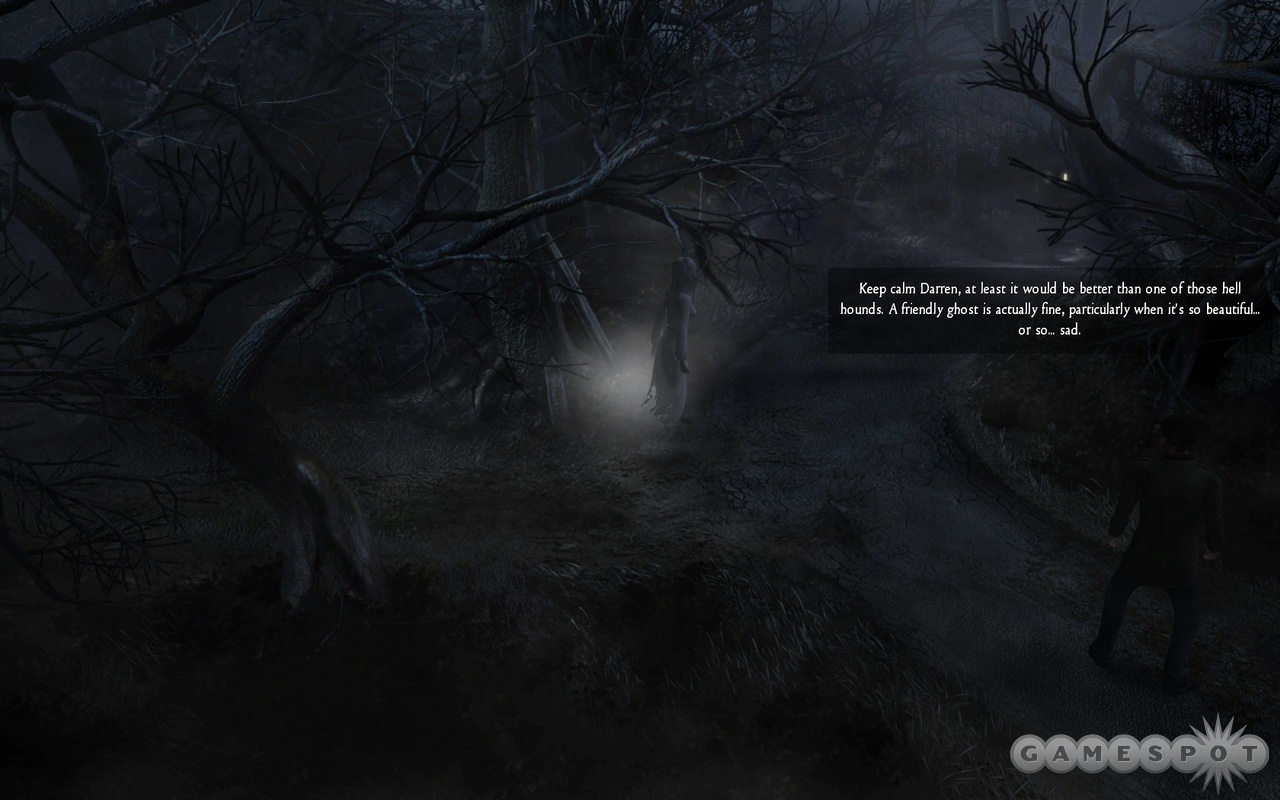The Black Mirror trilogy of point-and-click adventures goes out just the way that it came in, with scares and frustration running neck and neck. Cranberry Production's Black Mirror III, subtitled The Final Fear in some markets, is certainly as chilling as its predecessors, but the game is also afflicted with a slow-moving plot and maddening inventory puzzles that are exceedingly difficult to solve without the help of a walkthrough. This is old-time adventure gaming at its best and worst. While this haunted-house ride should keep you hanging around to see how everything wraps up, expect to be tempted to give up more than once by the sleepy pace of your progress and the many obtuse problems that defy logic.

The scariest thing about Black Mirror III may be how unfriendly it is to newcomers. The game begins right where its 2007 predecessor left off, with possibly crazy protagonist Darren/Adrian Michaels/Gordon being arrested for murder and arson in front of a burning mansion creepy enough to have been a set for a Hammer horror film. You're dropped into the action with no backstory, no flashbacks, and no assists of any sort to give you the slightest inkling of what's going on. The story sort of makes up for that later on, with a stretch of explanations that beat you over the head with What It All Means, but the early hours have your head spinning with references to the evil Gordon family, serial murders, a secret order, false death certificates, a crooked hotel owner, a ghost looking for her long-lost child, and much more. Because most of the gameplay deals with right-now inventory puzzles and set-piece head-twisters, you can still muddle through. But if you really want to get the most out of this eerie saga, you need to hunt down copies of the first two games and play through the series in its proper order. Not that you're dealing with timeless storytelling here.
While the vast majority of Black Mirror III's grim locales pleasingly resemble doom metal album covers, the graphics are dated, especially the mannequin-like character models. There are few close-ups, so most areas are shown from the same panned-back camera angle featured in adventure games going back to the 1980s. Fortunately, there is a smart sense of style in the art itself. There are loads of chilling locales in the game, some expected, some not. Everything is spooky, from the cemetery and morgue torture chamber to a village church and even a rundown convenience store.
Fine details make these areas look lived-in. Little touches constantly catch your eye, such as the dreamcatcher on the window in the therapist's office at the start of the game, the rack of used books at the corner store, and the oil paintings in the egotistical hotel owner's office. Few people populate these areas, though, establishing a captivatingly lonely mood accentuated by the sparse, plinking piano score. Clumsy voice acting slices through this thick atmosphere on a regular basis, however. While there are a couple of good performances, many of the lead roles seem to have been voiced by non-English speakers, and horrendous accents have been lathered on top of a number of characters. Darren/Adrian lugs around a Bawston accent that's borderline offensive, and Inspector Spooner's thick Irish brogue is voiced by a guy whose closest connection with Ireland is holding a bar of Irish Spring in the shower.

All of the visual detail is also somewhat problematic. Every scene is crammed with hotspots that can be examined. Even a tiny cabin in the middle of the woods features a dozen clickable locations. But the vast majority of these spots deal with common items like toilets, mailboxes, tree branches, and other background scenery and have absolutely nothing to do with the storyline. All you get from clicking on them is an acerbic comment from the protagonist that accomplishes nothing but to slow down your progress and pad a six- to seven-hour game into a 10- to 12-hour one. Of course, you can't skip clicking on everything, because one hotspot in every seven or eight is an object that you can actually pick up or that leads to a real clue. Dialogue is similarly stretched out, with nonsensical conversations that drag on forever. And you can't skip them, either, because you need to reveal all pertinent facts to unlock sections of the map. So even if you've deduced something already from previously acquired evidence, you still need to go through the motions to prove to the game that you actually know what you're doing.
Dense puzzles also slow things down. This is a point-and-click adventure with horribly old-fashioned mechanics, so you're stuck picking up everything that isn't nailed down. You whip up MacGyver-ish contraptions, use corkscrews in very interesting ways, and haul around bones for no particular reason. There are worse adventures out there when it comes to this sort of thing, and at least here you make a point of dropping big items like chainsaws after use instead of dragging them through the entire game. Still, there are a lot of annoying moments when you're forced into random experimentation or hunting online for a walkthrough. Some of the inventory problems make no sense and involve illogical steps that are really tricky to figure out on your own. Logic puzzles are more interesting, at least. A fair number of them are spread throughout the game, and most involve interesting sidelines like setting up a film projector, deducing the location of a grave, breaking various codes, and more. All are solvable with careful study, and most deliver a sense of satisfaction.
Black Mirror III really plays to its audience. Old-school adventure gamers might appreciate how it stays true to a familiar formula and offers smart logic puzzles, even while groaning at the protracted pace and the tedious inventory collection. Aside from the somewhat modern visuals and the large number of voice samples, there isn't anything here that couldn't have been featured in an adventure game released 20 years ago. Those who don't appreciate this style of game or simply don't want to relive the early 1990s will not find anything here to change their minds.